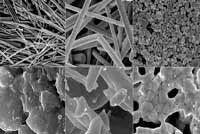 By suspending tiny metal nanoparticles in liquids, Duke University scientists are creating conductive ‘inks’ that can be used to print inexpensive, customisable circuit patterns on any surface.
By suspending tiny metal nanoparticles in liquids, Duke University scientists are creating conductive ‘inks’ that can be used to print inexpensive, customisable circuit patterns on any surface.
According to the researchers, printed electronics currently have one major drawback: for the circuits to work, they first have to be heated to melt all the nanoparticles together into a single conductive wire.
Duke researchers show that changing the shape of the nanoparticles in the ink might eliminate the need for heat.
By comparing the conductivity of films made from different shapes of silver nanostructures, the team found that electrons cross films made of silver nanowires more easily than films made from other shapes, such as nanospheres or microflakes.
"The nanowires had a 4000 times higher conductivity than the more commonly used silver nanoparticles that you would find in printed antennas for RFID tags," said assistant professor Benjamin Wiley. "So if you use nanowires, you don't have to heat the printed circuits up to such high temperature and you can use cheaper plastics or paper."
The scientists mixed the nanostructures with distilled water to make simple ‘inks’. By adding a precise volume of ink into each tape ‘well’ and then heating the wells – either to relatively low temperature to simply evaporate the water or to higher temperatures to begin melting the structures together – they created a variety of films to test.
"The resistivity of the long silver nanowire films is several orders of magnitude lower than silver nanoparticles and only 10 times greater than pure silver," graduate student Ian Stewart said.
As well as smart packaging, the researchers envision using the technology to make solar cells, printed displays, LEDS, touchscreens, amplifiers, batteries and implantable bio-electronic devices.
The team is now experimenting with using aerosol jets.
Author
Peggy Lee
Source: www.newelectronics.co.uk
